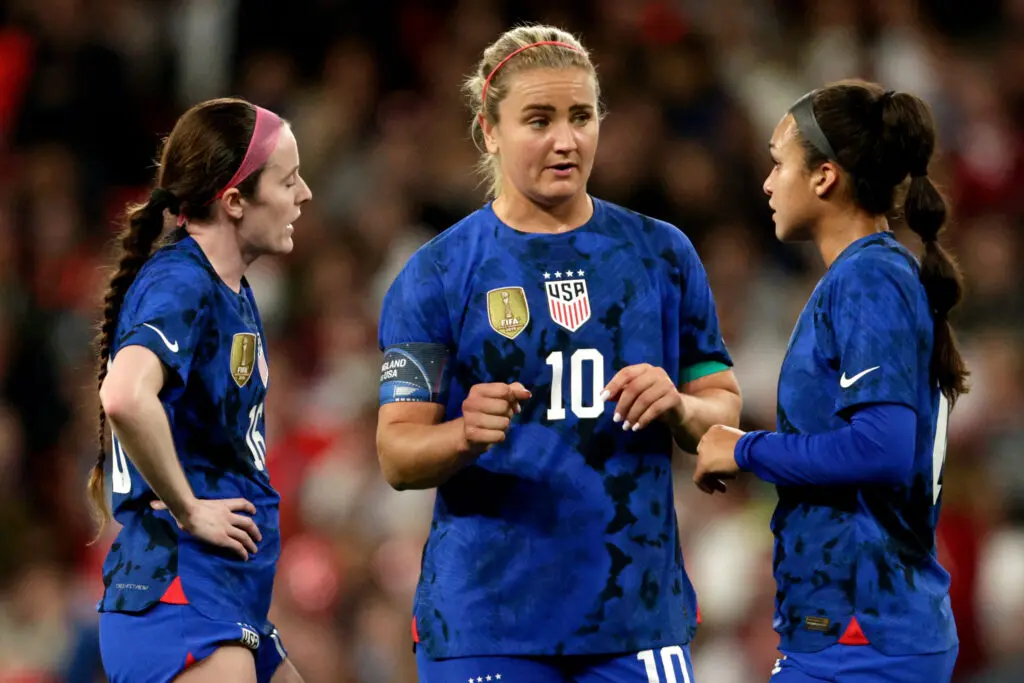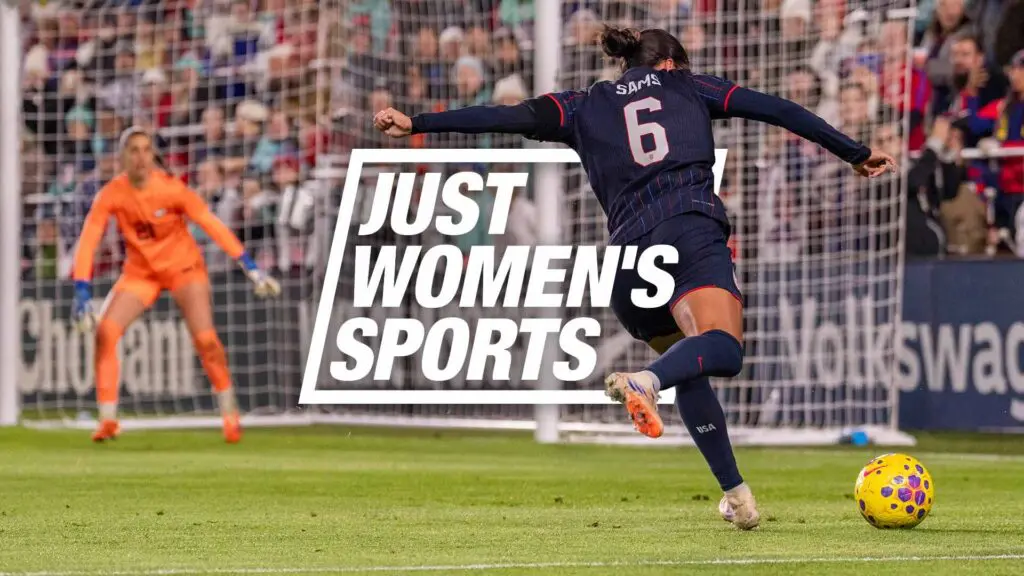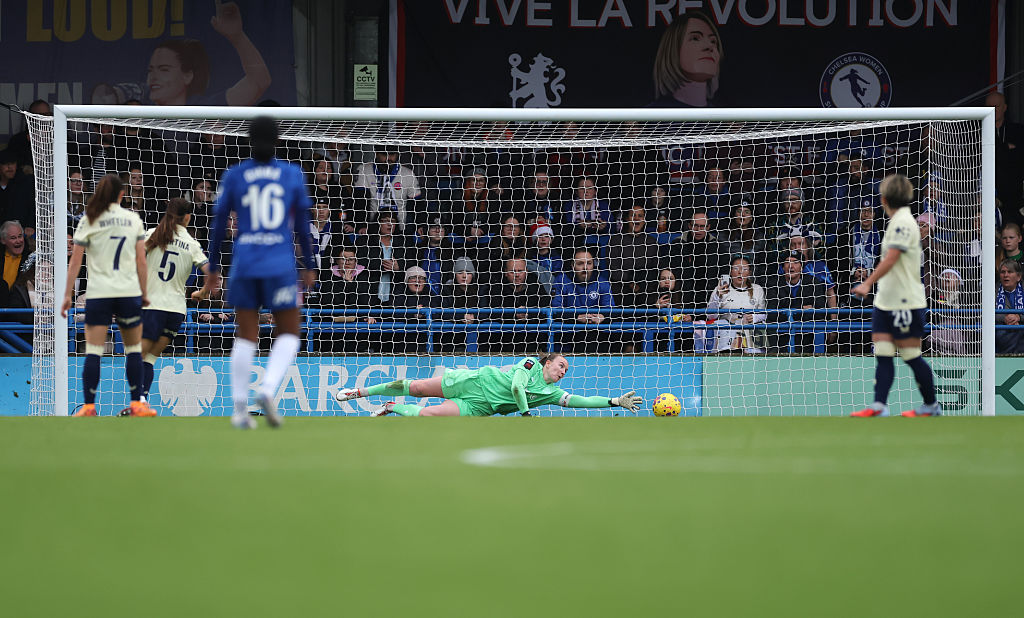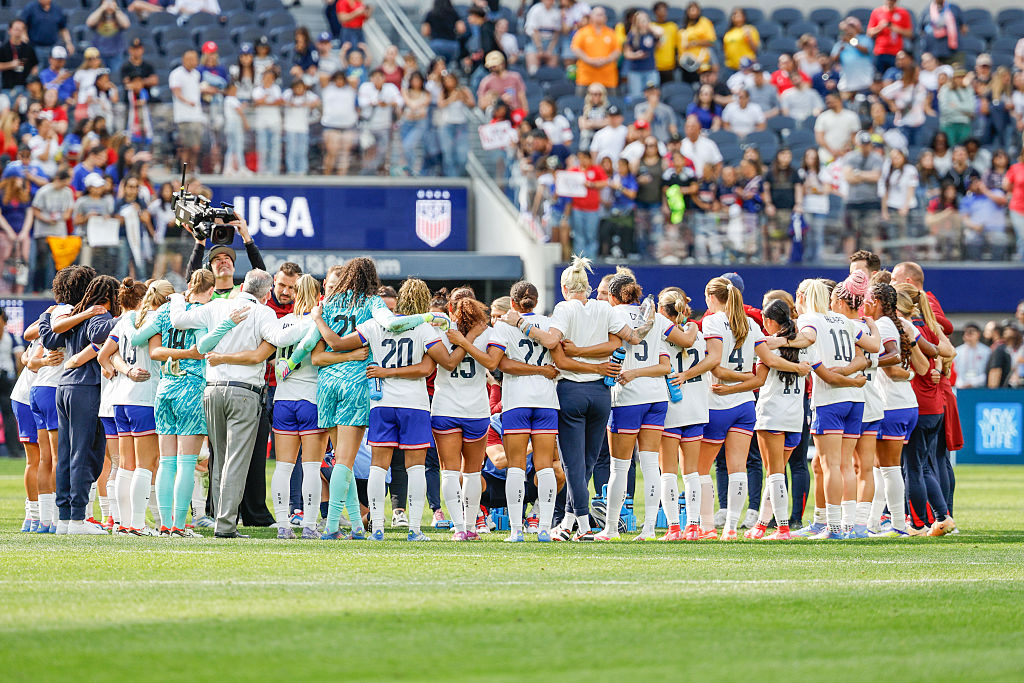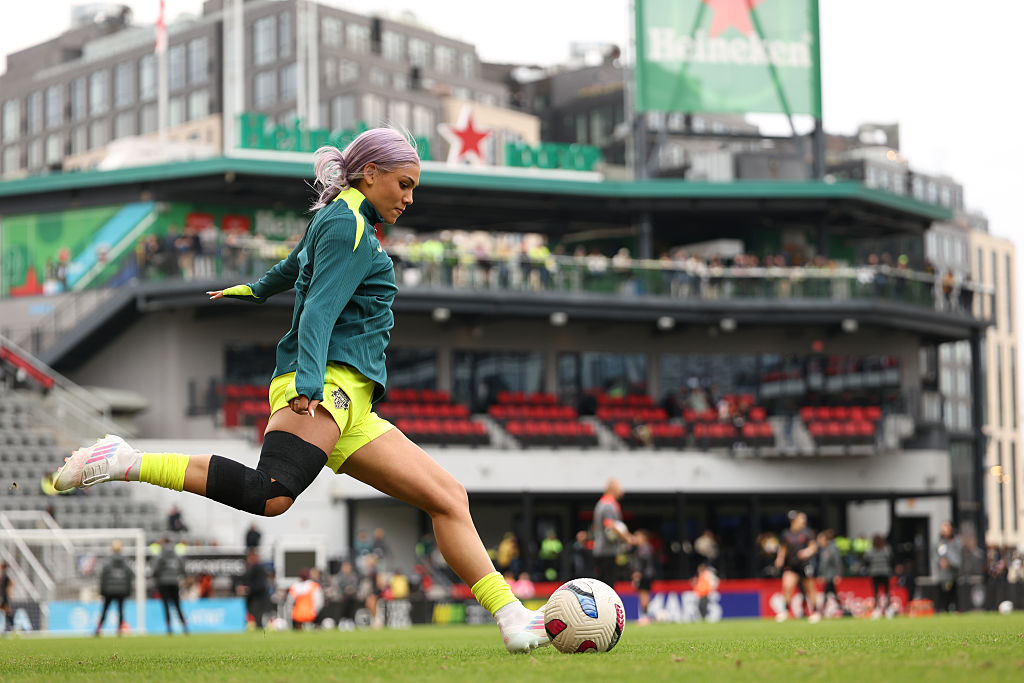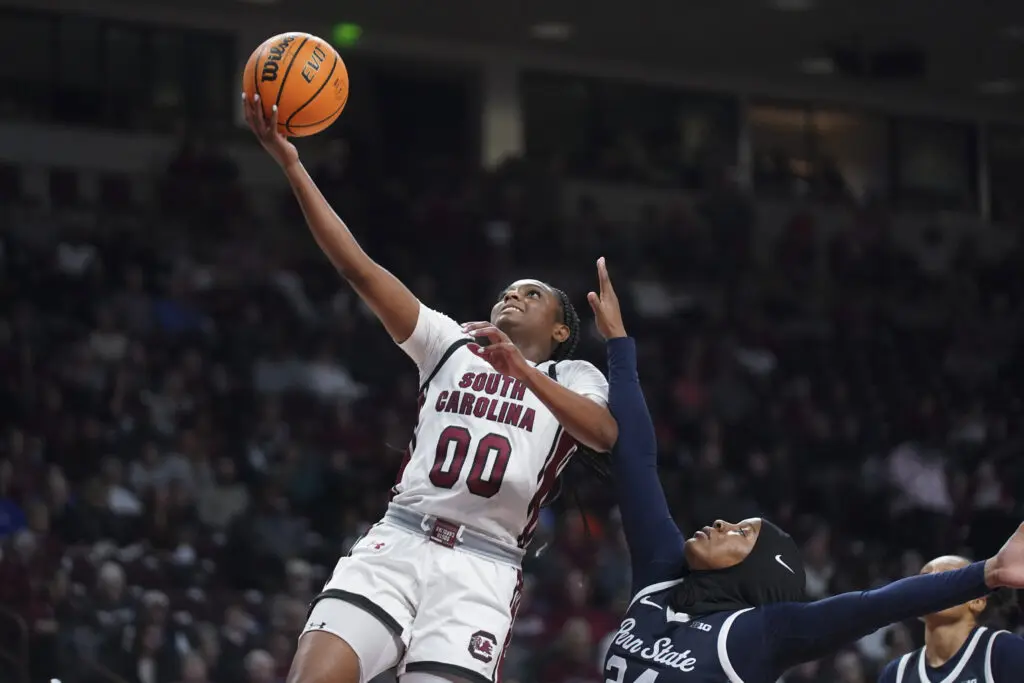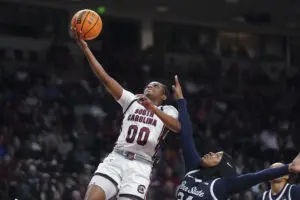When the U.S. women’s national soccer team scheduled friendlies against England and Spain for an October trip abroad, no one quite knew what to expect. The USWNT hadn’t faced many nations in the top 10 of the FIFA rankings since the Tokyo Olympics in 2021, and player absences continued to pile up.
Still, what happened on the trip proved a shock to the system, as the U.S. lost two games in a row for the first time since 2017.
Losses have served as an important part of the World Cup cycle for the USWNT in the past, but the performances against England and Spain nevertheless have fans taking a long look at the panic button.
While a number of issues the USWNT faced this week provide context to the performances on the field, the team also returns to home soil with legitimate causes for concern.
Execution in the midfield
Context
It’s both impossible and unfair to ignore the off-the-field circumstances surrounding the USWNT this week. The Sally Yates report for U.S. Soccer, which detailed years of abuse in the NWSL, dropped just five days before the matchup against England.
For days, players had to field incredibly heavy questions from the news media, some about their direct employers, while also turning their attention to the upcoming matches. While USWNT players have never shied away from using their platform, the toll became evident throughout the week.
The USWNT didn’t lack for energy in their blockbuster battle at Wembley Stadium. Despite a number of significant absences, they were able to keep up in a sometimes frantic transition battle in which they didn’t see much of the ball.
Against Spain, though, the team ran out of gas, mentally switching off on the corner kick that led to Laia Codina’s opening goal—a cleanup shot after the U.S. got caught flat-footed in a goalmouth scrum. The USWNT trailed going into halftime and struggled to force the issue in the second half.
Concerns
There’s no shame in a letdown once the adrenaline wears off, especially after the week the USWNT players had, very far from home. But that letdown only makes the success of Vlatko Andonovski’s system all the more important, as it becomes the backbone that players can rely on when they aren’t firing on all cylinders.
While some progress has been made, top 10 opponents can still make the USWNT feel uncomfortable with concerning ease.
The midfield style, which still prioritizes a ball-winning No. 6 covering superhuman amounts of space, doesn’t lend itself to either Andi Sullivan’s or Sam Coffey’s strengths. Lindsey Horan and Rose Lavelle generate turnovers by pressing opponents’ backlines, but that aggressiveness means the players behind them can be caught in isolation.
We saw during the Concacaf W Championship how the approach can work against teams that concede possession. But neither England nor Spain are that kind of opponent. Against the Lionesses, the USWNT only held the ball for 31.3% of the match, and they paired that with 67.7% passing accuracy.
England and Spain were not able to seize as many opportunities from turnovers as they could have, so the results in both games could have been worse based on the lack of cohesion in the midfield.

Evaluating the attack
Context
It feels like every time the USWNT takes the field, another important player is missing. In addition to the previously known absences of Catarina Macario, Christen Press, Tierna Davidson, Sam Mewis, Julie Ertz, Kelley O’Hara and more, the U.S. traveled to Europe without Mallory Pugh, who left camp for a family matter, and without Alex Morgan, who is working through a knee injury.
Adding to the list of October casualties, Emily Fox suffered a concussion against England, resulting in another call-up for North Carolina Courage defender Carson Pickett. Pickett is more than capable of showing what she can do on the world stage, but the last-minute nature of her call-up didn’t set her up for success against Spain.
Concerns
When faced with limited options, the USWNT pulled a few interesting cards. Sophia Smith moved centrally as the team’s main playmaker, and she shined against England. On the wing, Trinity Rodman’s consistent minutes were new at the international level, and she stepped up in big moments.
Other decisions felt distinctly less interesting than they could have been, especially on the left side of the pitch. Megan Rapinoe started both matches at left wing, a decision likely made when Pugh left camp. Rapinoe is clearly an essential locker room presence, and she remains a late-game sub who can turn the tide, but Pugh’s off-ball work was missed in both games.
There’s nothing wrong with seeing what your depth chart can do in the face of injury, but the slotting in of Rapinoe speaks to a larger lethargy. There have been opportunities to bring new forwards into the player pool in recent months, but Andonovski has not taken advantage. Plus, Rapinoe already has so much experience under her belt, so what are she and the coaching staff learning from these losses?

What to make of the defense
Context
As with the attack, there are both injuries and absences to take into account when looking at the USWNT defense.
By the second game in the international break, the team started two outside backs who originally joined the squad due to injuries to other players. Crystal Dunn is still working her way back to fitness, and both Kelley O’Hara and Emily Sonnet were missing. The U.S. traveled with just three center-backs: Becky Sauerbrunn, Alana Cook and Naomi Girma.
Girma was a revelation against England, with a sense of spacing and an understanding of how and when to go to ground. Andonovski has avoided pairing her with Sauerbrunn in 2022, which possibly has to do with both players being more comfortable on the left side of the central defense. But it could also mean that Tierna Davidson and Abby Dahlkemper, both out due to injury, still have opportunities to get back in the rotation.
Concerns
The USWNT defense can get overwhelmed when opponents break through. In these matches, they weren’t helped by turnovers in the midfield. Still, in top-tier international competition defenders frequently are called upon for quick decision-making and one-on-one urgency, which the U.S. lacked in both matches.
The USWNT defense can get overwhelmed when opponents break through. In these matches, they weren’t helped by turnovers in the midfield. Still, in top-tier international competition defenders frequently are called upon for quick decision-making and one-on-one urgency, which the U.S. lacked in both matches.
The USWNT’s penchant for prioritizing distribution over defensive comfort can cost them against top teams. While sometimes the only way for players to improve is through the kind of competition we saw this week, the defense has not looked settled or confident yet.
The issue doesn’t always lie in physical attributes but instead can come down to confidence in making decisions. Andonovski needs to decide how long he can wait for the defense to improve before making the call that the group isn’t coming together.
